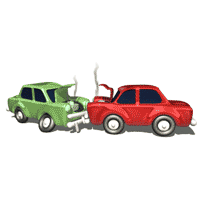Sponsored by BoysStuff.co.uk


With all the upgrades to passenger vehicles in recent years you'd think the number of injury accidents would be on the decline. Most vehicle manufacturers have included both active and passive safety features to their cars in an effort to make them safer. For example, Nissan offers pipe-style steel side-door guard beams to absorb the impact of a side collision and Isuzu offers head-curtain side-impact air bags. Many vehicles also offer active safety features in an effort to help drivers prevent accidents such as antilock braking systems, automatic dimming rearview mirrors, and tire pressure monitoring systems. It is the combination of all of these active and passive safety features that make vehicles considerably safer for occupants than they've been in the past. But do they make us better drivers? According to a study completed by Purdue University, the answer is no.
Published in the Journal of Risk Uncertainty, the study suggests that drivers of "safe" vehicles (eg. – vehicles that are loaded with the best passive and active safety features) are just as likely to get into accidents and sustain injuries as drivers who were driving "less safe" cars. How can that be? It actually has nothing to do with the cars or the safety features – it has to do with the way we drive.
Researchers analyzed motor vehicle data from 1992 to 1997 in Washington State and found no marginal difference between the number of accidents or the level of injury to the drivers between the safer cars and those that weren't considered as safe. Why? Fred Mannering, Ph.D. and the study's author explains that people who know their car's safety features reduce their risk of both accident or injury at a given speed will drive faster to return to the original level of risk.
Sounds crazy? It's not. The psychological phenomenon is also referred to as "risk homeostasis." Psychologists analyzed a similar vehicle/road safety phenomenon in both Sweden and Iceland. When the Swedish changed to right hand traffic from left hand traffic in 1967, there was an immediate and significant reduction in the country's traffic injury rates and fatalities (studies have shown that right hand traffic is indeed safer than left hand traffic). However, within two years, the injury and fatality rates returned to their original levels. Why? The answer is in the perceived risk of the individual drivers. The change from left to right had an effect on how drivers drove. It increased their level of perceived risk and caused them to be more cautious while driving. The increased caution reduced the number of road crashes for almost two years. But people began to realize that the roads were less dangerous than they thought and because the risk of being injured in an accident had declined, they became less cautious in how they drove and the number of accidents began to climb back to the original number. When Iceland changed over to right hand traffic in 1968 it experienced a similar short term fluctuation in the rate of road crashes.
So what does this all mean? It means that despite the upgrades in safety equipment in today's cars and SUVs, it's important that we, as drivers, do not rely on the safety systems of our vehicles (and those driven by other drivers) to keep us safe. First and foremost, the decisions made by the driver (to speed, to run a red light, to cut in and out of traffic lanes) impact whether or not he/she will be involved in an accident and every accident runs the risk of injury to the people involved.

| © RIYAN Productions |